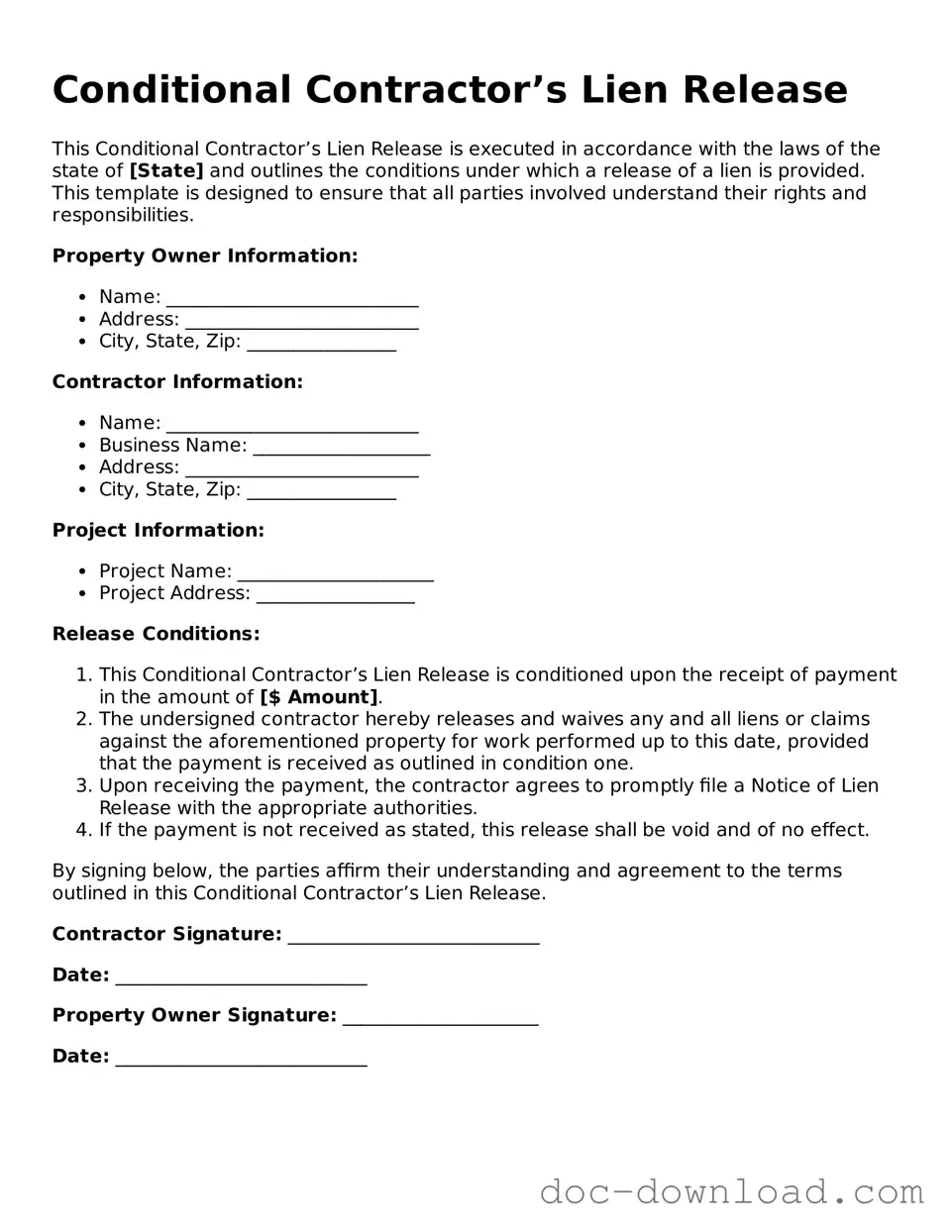The Conditional Lien Waiver is closely related to the Conditional Contractor’s Lien Release form. Both documents serve to protect parties involved in a construction project by ensuring that contractors waive their right to file a lien against a property, contingent upon receiving payment. The key difference lies in the terminology used; while one focuses on contractors, the other may be used by subcontractors or suppliers. This creates a clear understanding of who is waiving their rights based on the payment status.
The Unconditional Lien Waiver is another similar document. Unlike the Conditional Lien Waiver, which is dependent on payment, the Unconditional Lien Waiver releases the right to file a lien regardless of whether payment has been received. This document provides immediate assurance to property owners that they will not face a lien, enhancing trust in the transaction. It’s important to use this document carefully, as it relinquishes rights without the condition of payment.
The Conditional Lien Release is similar to the Conditional Lien Waiver but is often used in different contexts. It is typically utilized by property owners or general contractors to release a lien claim based on the condition of payment. The key similarity lies in the conditional nature of the release, which ensures that the right to file a lien remains intact until payment is confirmed.
The Final Lien Waiver is another document that shares similarities with the Conditional Contractor’s Lien Release. This waiver is used at the completion of a project, confirming that all parties have been paid and thus relinquishing any future lien rights. Like the Conditional Contractor’s Lien Release, it provides a sense of closure and security for both the contractor and the property owner, but it is specifically aimed at finalizing the project.
The Partial Lien Waiver serves a similar purpose but applies to partial payments. This document allows contractors to waive their lien rights for a specific amount of payment received while retaining the right to file a lien for the remaining unpaid balance. It ensures that property owners can make progress payments without fear of future claims, while also protecting the contractor's interests.
The Notice of Intent to Lien is a document that precedes the filing of a lien. While it does not release any rights, it serves as a warning to property owners that a lien may be filed if payment is not made. This document is similar in that it addresses the issue of payment and lien rights but does so in a more proactive manner, aiming to encourage payment before a lien is necessary.
The Lien Release on Payment is another document that aligns closely with the Conditional Contractor’s Lien Release. This form is typically used when a contractor receives payment and wishes to confirm that the lien rights are waived for that specific payment. It is a straightforward way to document that payment has been made and accepted, ensuring that both parties have clarity regarding the status of lien rights.
The Mechanic's Lien is a legal document that allows contractors, subcontractors, and suppliers to claim a lien against a property for unpaid work. While it serves a different function than the Conditional Contractor’s Lien Release, both documents are part of the same legal framework surrounding construction and payment. The Mechanic's Lien is used to enforce payment rights, whereas the Conditional Contractor’s Lien Release is used to waive those rights under specific conditions.
To ensure the safe arrival of your packages, it is important to complete the necessary documentation, such as the Fedex Release form, which allows you to authorize FedEx to leave your shipment in a specified location when you are not home. This can streamline the delivery process and provide peace of mind regarding your deliveries.
The Release of Lien is similar to the Conditional Contractor’s Lien Release in that it formally releases any claim against the property. This document is often used after payment has been made, ensuring that the contractor cannot file a lien for that specific project. It provides peace of mind for property owners and confirms that all parties are in agreement regarding payment and lien rights.
